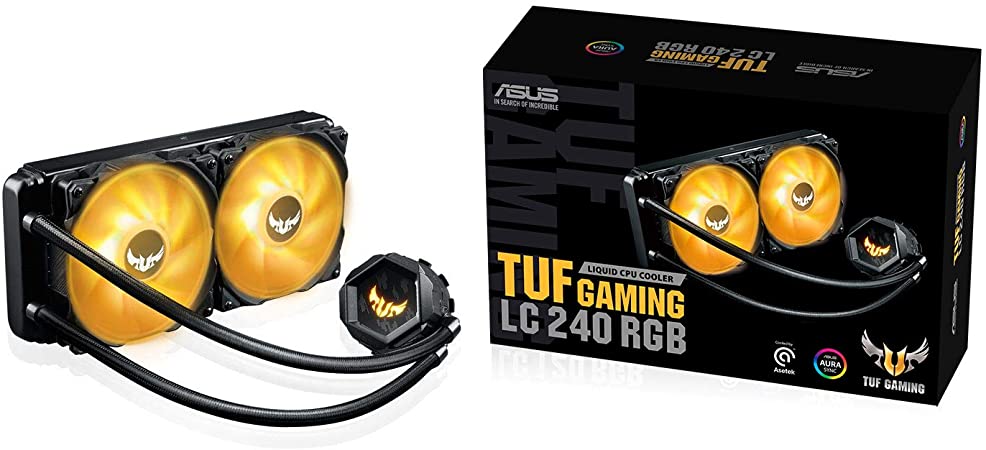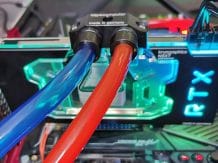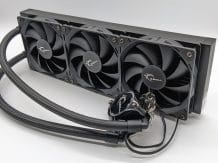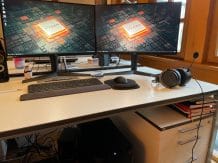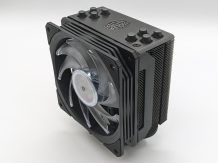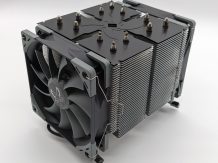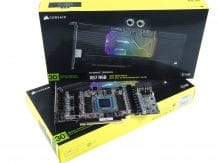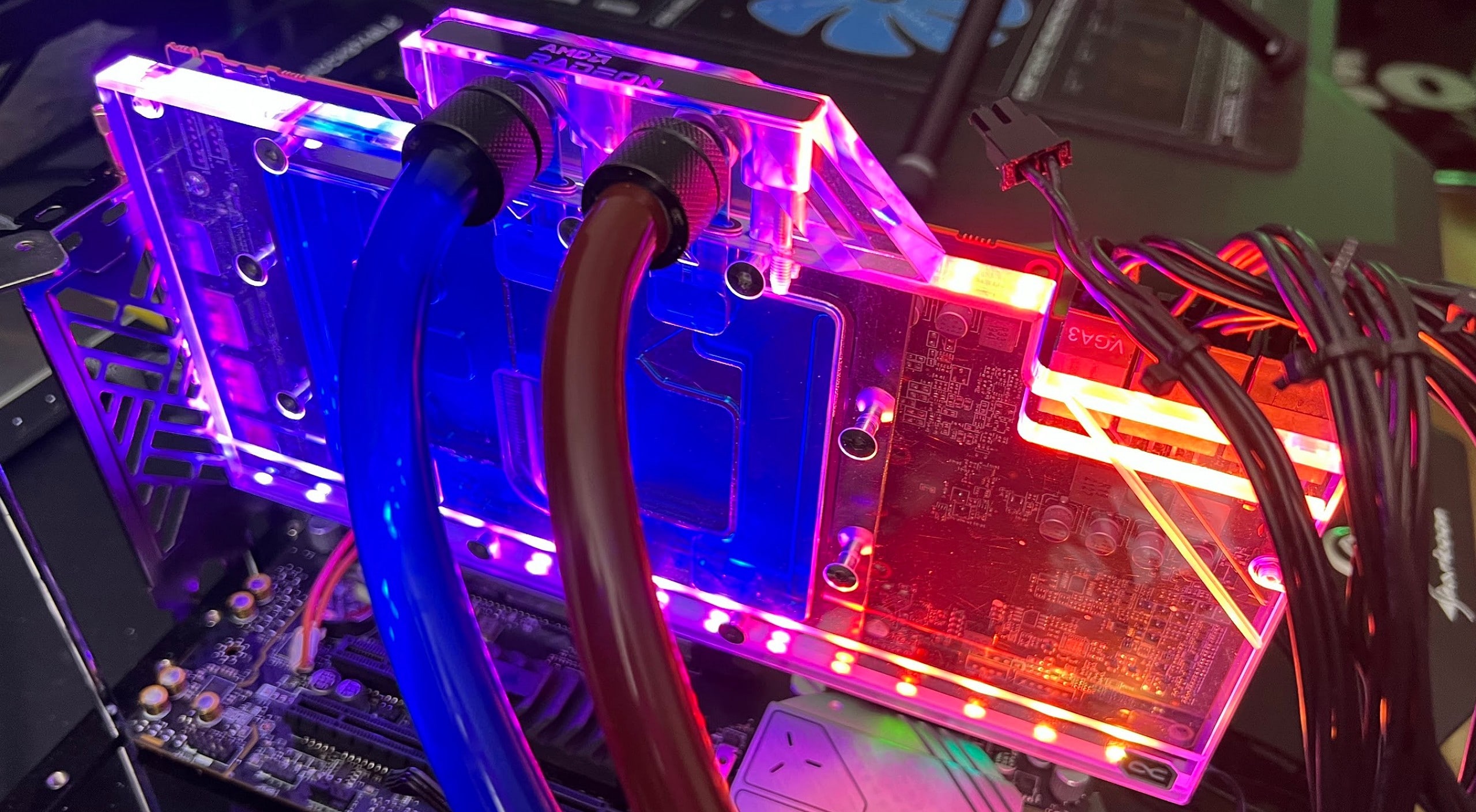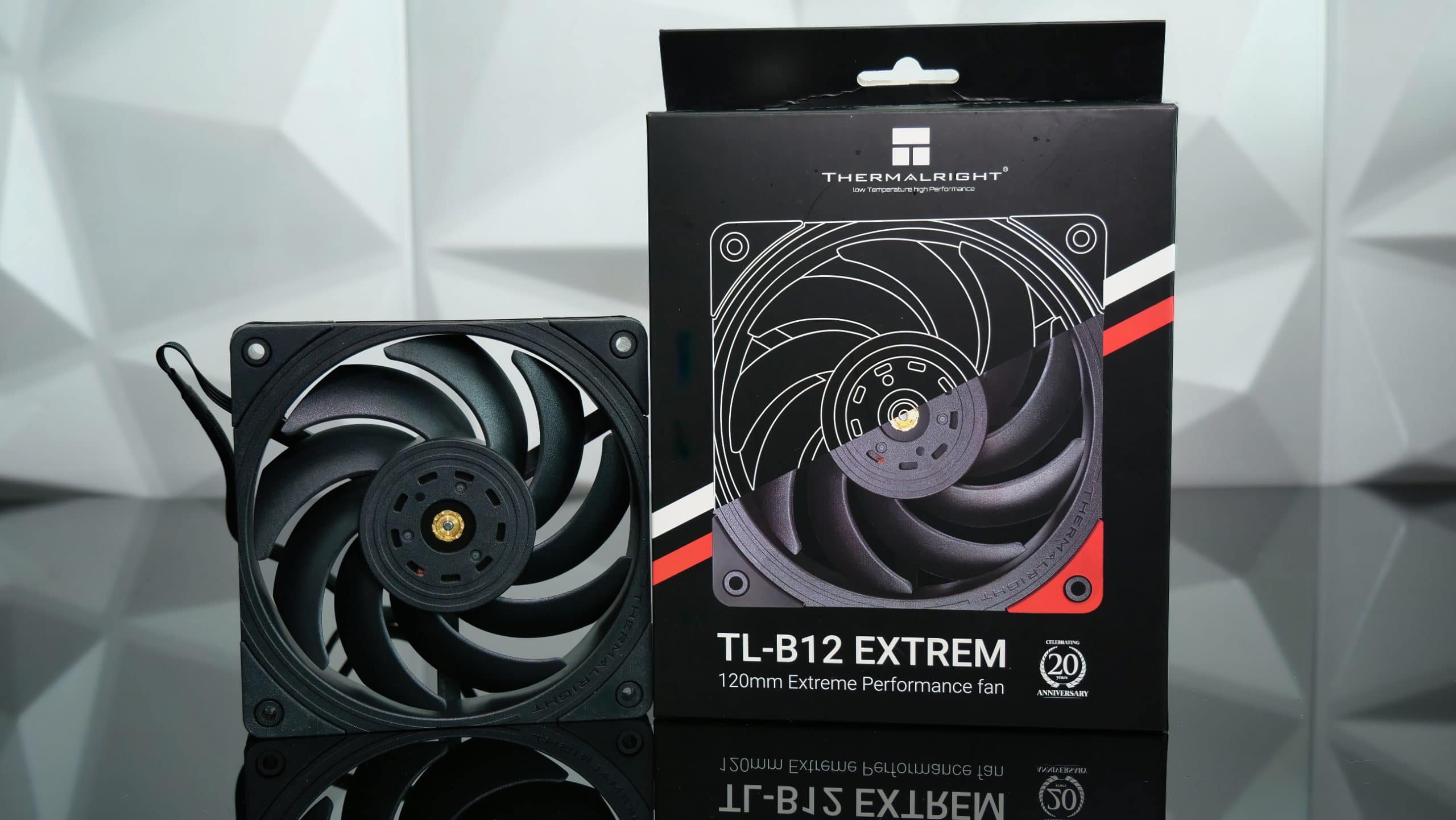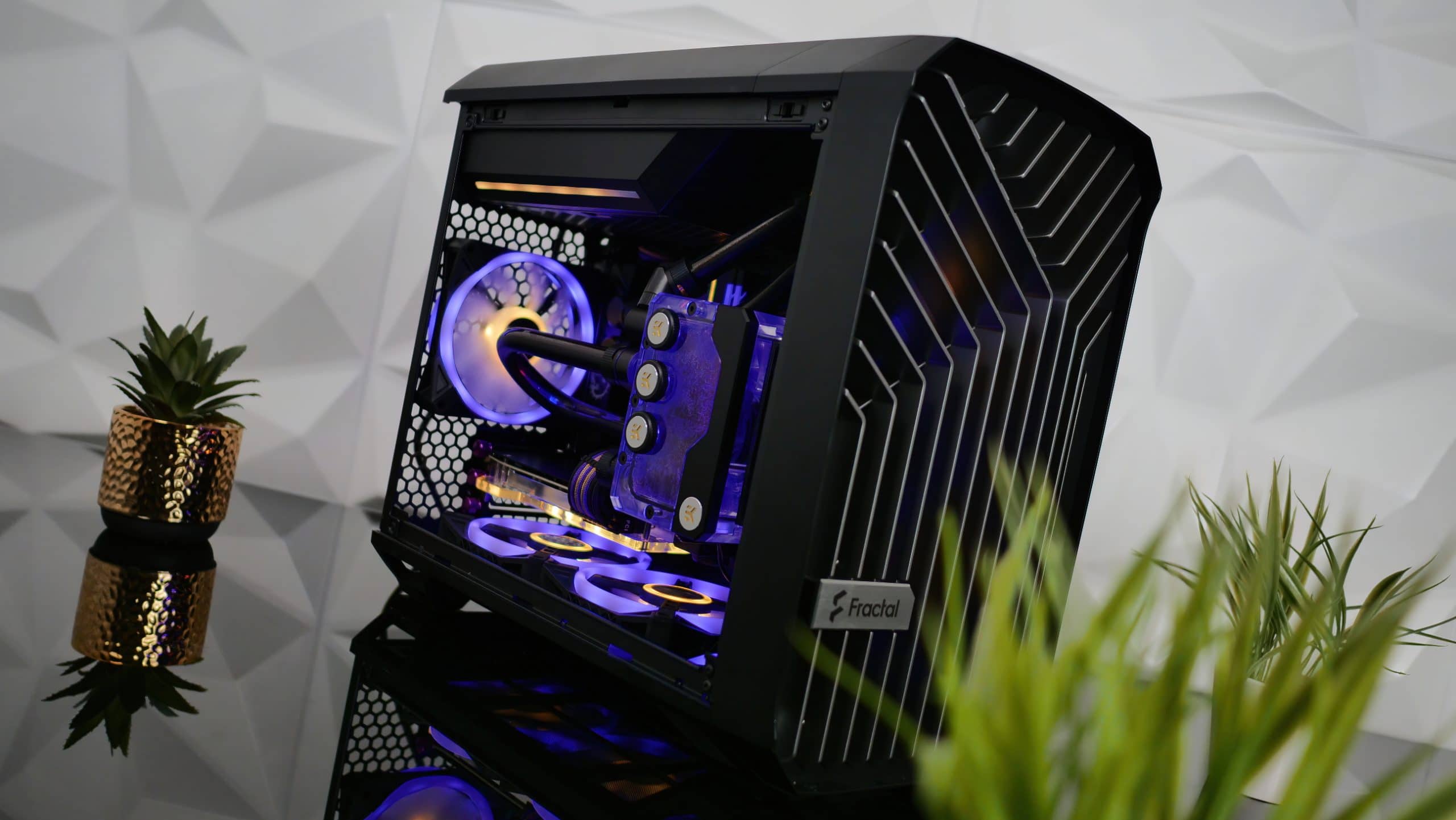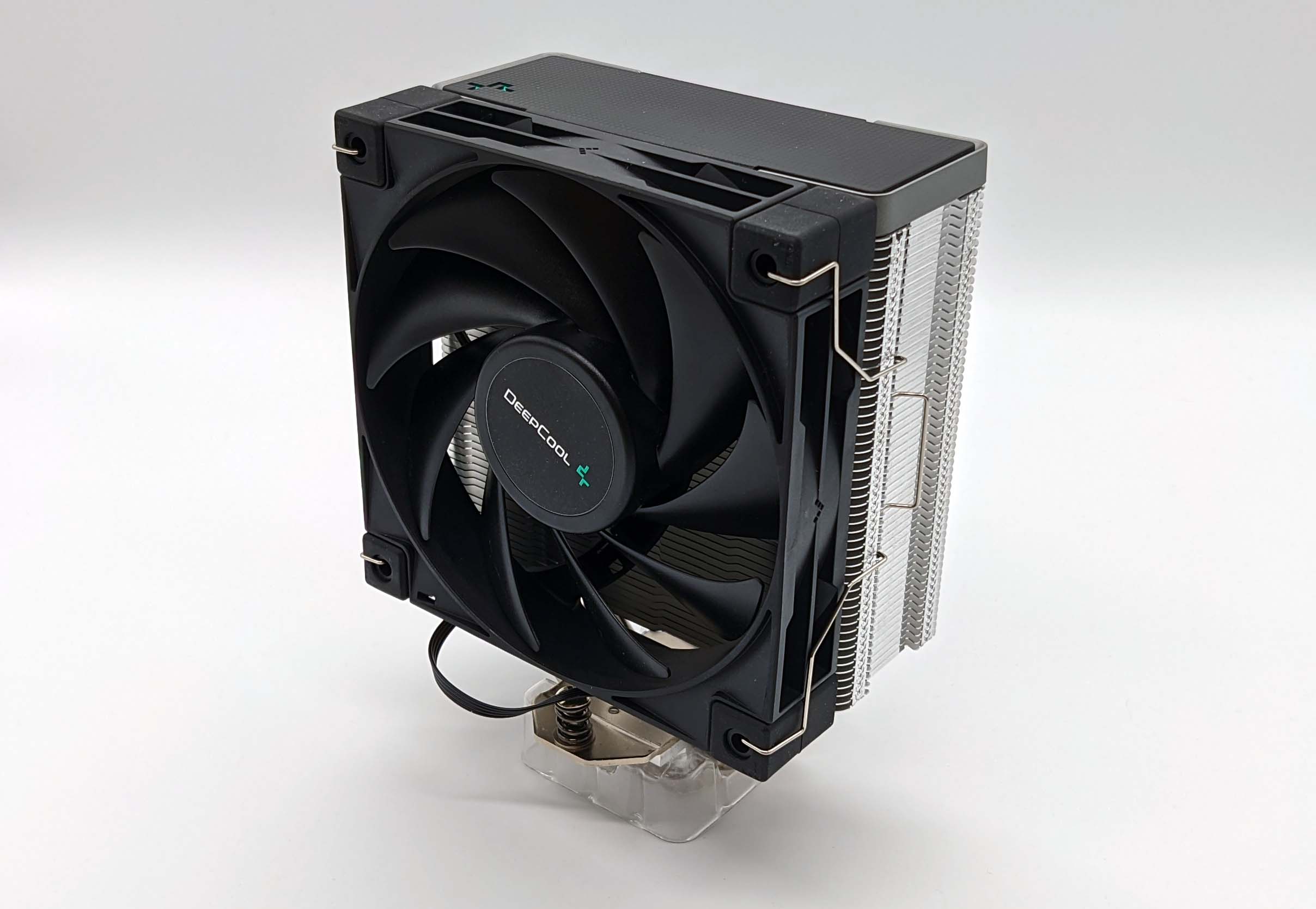Review and testing of the processor CBO ASUS TUF Gaming LC 240 RGB –
Introduction
Liquid cooling systems are becoming more and more popular. Now there are many models of unattended systems that are easy to operate and install. It is not for nothing that all manufacturers of cases insist that their products support LSS.
As a rule, we are talking about ready-made models, where the main difficulty is the installation of the main radiator. A ready-made, maintenance-free water cooling system consists of a radiator, hoses and a water block combined with a pump, which is installed directly on the processor. The main characteristics that affect performance are radiator size and pump performance. This is all clear: the larger the radiator, the larger the heat sink area, and the more powerful the pump, the more intensively it works and the better the heat exchange.
The most optimal in terms of price / performance ratio are versions with a 240 mm radiator. In fact, it is assumed that their dimensions are suitable for mounting two fans with a diameter of 120 mm. The principle of operation is simple. The pump pumps water and acts as a circulation pump. The system is sealed and you do not need to top up anything. The pump speed is controlled in the same way as the PWM fan speed. The processor is warming up – the pump is pumping harder. Oddly enough, but such ready-made sets of maintenance-free LSS cost even less than supercoolers, with similar efficiency, but the main advantage of such systems is a relatively compact heat collector. Instead of a huge radiator, you need to put a small device that is a heat sink and a pump.
Among the wide variety of models of companies specializing in cooling, there are devices from manufacturers of cases and other equipment. One of the largest is ASUS, which has a very wide range of products. This company does not specialize in refrigeration, but there are product lines that are actively promoted. Therefore, the buyer can afford to buy a processor and RAM somewhere on the side, and the rest will be ASUS TUF Gaming.
Today we are testing the ASUS TUF Gaming LC 240 RGB liquid cooling system kit. This is a mid-range model with good technical characteristics and good looks. I have not tested such systems using mainly air supercoolers, so it will be interesting to test the novelty in operation. Will this system handle Ryzen 7 3800X overclocking?
announcements and advertisements
3060 cheapest in Citylink
Many <b> MSI RTX 3060 </b> on sale
First-hand Z590 motherboards at very good prices
RTX 3070 cheapest at Compeo.ru
<b> The best GTA 5 server – real cars, factions, gangs, no bots </b>
3060 Gigabyte Vision in Citylink
RTX 3060 12Gb in XPERT.RU – be in time 🙂
-20% on an almost gaming computer – nowadays it also happens
<b> Galaxy S20 family price crash </b> 25% discount
30% discount on 75 “4K Samsung – cheap drain in Citylink
RTX 3070 at XPERT.RU at the lowest prices
75 “LG IPS for 4,736,000 rubles – see specifications
Lots of RTX 3090 in XPERT.RU
Packaging and equipment
The box is very large for a cooler. However, we understand that this is a large, complex device that consists of several components. There should be a radiator, fans, pump, water block and accessories for installation.

The packaging looks like other ASUS TUF Gaming devices and is pretty pretty. Everything is done neatly, neatly and beautifully. Various information about the device is presented on different sides of the box.
Let’s look at the packaging from all sides.
Basic information is located at the front and back. The model name is indicated on the sides. On the main side, we see a picture of the device. Everything is very usual. Radiator with fans, two hoses and a water block. In fact, the device is not as simple as it looks. There are much more components here because there is still a pump that is combined with a water block.
In the upper left corner is the manufacturer’s logo and the familiar slogan: in search of the incredible. Below is the full name of the model and it is reported that this is a liquid cooling system. There are three icons in the lower right corner. The first one represents the company Asetek, which specializes in the creation of LSS and may have helped ASUS with this system. Next up is the familiar ASUS AUR Sync badge and the TUF Gaming logo.
Let’s look at the opposite side. At the top we see the name of the model again. Below is another image of the device, but this time with footnotes and captions for some of the components. Below is the specification, which is divided into four pillars.
| Model | ASUS TUF Gaming LC 240 RGB |
|---|---|
| Pump dimensions | 80 x 80 x 45 mm |
| Radiator dimensions | 272 x 121 x 27 mm |
| Radiator material | Aluminum |
| Heat sink material | Copper |
| A tube | Braided rubber tube |
| Fan model | TUF FAN Model 12 RGB |
| Fan configuration | 2 x 120 mm |
| Rotational speed | 800-2000 ± 10% RPM, PWM control |
| Air flow | 67 CFM |
| Air pressure | 3 mm water column |
| Noise level | 29 dBA |
| Bearing type | Hydraulic |
| Rated voltage | 12 in |
| Rated current | 0.35 A |
| Warranty period | 5 years |
| Compatible sockets | Intel: LGA 115X, LGA 1200, LGA 1366; AMD: AM4 |
The 5-year warranty is very good. Unfortunately, nothing is said about the thermal power that this system is able to take away from the processor. This is not very convenient because you have to make a start from some number in order not to get into a mess.
Now let’s see what’s inside.

Everything is neatly packed here. The device itself bends around the edges. There is a radiator on top, and a water block with a pump on the bottom left. They are connected with two hoses. In the middle is the rest of the package, including two fans. And there is also a manual and a bag with accessories.

What’s in the box? Let’s see:

- Universal plastic backplate for Intel platforms;
- Four adapter sleeves;
- Four sleeve-nuts for fixing the mounting plates;
- Mounting plate for Intel (installed on the waterblock);
- Mounting plate for AMD with a fastening eyelet for the protrusion of the standard AM4 fastening system;
- A set of screws and washers for attaching fans to a radiator and a radiator to the case;
- 4-Pin fan power splitter.
- RGB backlight splitter.

The thermal interface is already applied to the waterblock, so it is not included in the kit separately.
Device and features of LSS
Externally, the system is similar to other similar devices. The design is classic: the radiator is 240 mm, aluminum, thin and light. It is painted black.

There are mounting holes on the frame on both sides because fans can be placed on either side, but the radiator itself can be fixed to the case only with leads inward, because they will not press against the wall. Accordingly, it is better to install the fans on the side of the pipe outlets, and on the inflow or exhaust must be decided according to the situation.
The fans themselves are quite efficient and quiet.

Each is equipped with RGB lighting and therefore has two connectors: 4-pin RGB and 4-pin PWM FAN.

There are no soft pillows in the corners, only hard plastic. The blades are ordinary and there are few of them. The LEDs are located behind the impeller housing in the motor area.
The fan connection diagram looks like this:

Uses the supplied Y-piece. The pump is connected separately via a 3-pin connector. Its speed can also be controlled in DC mode, but there is no point in this because even in normal mode it is not audible. The fans are PWM controlled. It is logical to choose a processor as a reference point for temperature. The hotter it is, the higher the speed of the fans.
A different splitter is used to connect the backlight. In my case, a marriage was caught and one channel did not work.

I connected the devices directly to the board, and then everything worked as it should. A pump with a water block is a rather complex device, but the manufacturer himself explains to us how it works.

There are screws on the side of the base and the structure is disassembled. I did not dare to do this, so as not to break the tightness and not break the device.

Here you can also see that the thermal interface has already been applied. It is a soft thermal paste. In order not to accidentally lubricate it, there is a transparent plastic cover in the kit, which is fixed to the Intel mounting plate.

It must be removed before use. I also have to replace the mounting plate. It is very simple. After testing, we check the fingerprint. Everything seems to be fine.

Test stand
ASUS TUF Gaming LC 240 RGB LSS testing was conducted with the following components:
- Processor: AMD Ryzen 7 3800X (3900/4500 MHz base / turbo);
- СЖО ASUS TUF Gaming LC 240 RGB;
- Thermointerface: Noctua NT-H1;
- Motherboard: ASUS PRIME X570-PRO, BIOS version 2602;
- Память: 2 x 8Гб A-DATA XPG Spectrix D50 AX4U360038G18A-DT50 (SKhynix);
- Video card: ASUS TUF Gaming RX5700 (1720/1750/14000 MHz (core / boost / memory));
- M.2 SSD: Samsung 970 EVO 250GB
- Power supply unit: Seasonic (1000 W);
Testing
Before you start testing, you need to collect all this. The instruction is very simple and straightforward. The standard fastening of the AM4 socket remains, and a mounting plate is attached from above by the projections. A special eyelet is threaded through the hole and screwed on top of one of the fixing nuts.
Let’s look at the system in normal mode through the utilities.

The mount is very reliable and simple. After assembling the system, we start and see how everything works. At the first start, the system is pumping and there is a noticeable noise from the pump, similar to a creak. After working for a long time, it disappears.
The RGB connector is connected to the motherboard and through the splitter the signal is transmitted to each device separately. In this case, it turned out that the green channel does not work. It was all about the splitter, because if you connect the devices directly to the motherboard, everything works fine.
The noise in automatic mode under heavy load is very moderate.
It is quite another matter when the system is correctly tuned for optimal performance. To do this, you just need to manually set the processor frequency and reduce the voltage so that it works stably on it.
Now let’s look at the work in different modes. AMD Ryzen 7 3800X (default):

AMD Ryzen 7 3800X @ 4.3 при 1.3 В:

AMD Ryzen 7 3800X @ 4.0 при 1.1 В:

Test results
To warm up the processor, it was decided to use the Prime95 Small FFT utility. The processor passed tests in the following modes:
- AMD Ryzen 7 3800X (default);
- AMD Ryzen 7 3800X @ 4.3 при 1.3 В;
- AMD Ryzen 7 3800X @ 4.0 при 1.1 В.
Noise levelNoise level, dB
30 cm
Simple | Load
Less is better
Please enable JavaScript to see graphs
100 cm
Simple | Load
Less is better
Turn on JavaScript to see graphs
TemperatureCPU temperature
Simple | Load
Less is better
Enable JavaScript to see graphs
Transistor temperature
Simple | Load
Less is better
Turn on JavaScript to see graphs
Fan speed Impeller rotation speed, rpm
Simple | Load
Less is better
Turn on JavaScript to see graphs
The thermal imager shows that the heatsink itself does not get very hot.

It is also clearly noticeable that one hose is hotter than the other, but the difference is negligible.

Conclusion
Very good results, which I did not even expect. I thought everything would be more modest, but in the end I really liked it. There is noise from the pump only at the very first moment, when the system is pumping liquid, and then it becomes relatively silent. And the fans run at comfortable speeds for hearing. You can hear them, but not very critical, even at maximum revs.
As a result, the whole system does an excellent job of overclocking and shows good results. Assembling ASUS TUF Gaming LC 240 RGB is easy, the kit contains everything you need. Note that it is better to put the radiator in the case either in front or on top. In the first case, the fans must work for the supply, in the second – for the exhaust. The CBO is not only easy to assemble, but also easy to maintain. I cleaned the radiator and that’s it.
The exterior is also attractive. RGB lighting perfectly syncs with the motherboard. In my case, I just came across a defective RGB splitter, but you can easily make it yourself. Everything is perfectly compatible with the ASUS motherboard, but it’s hard to say how it will be with the model of another manufacturer.





